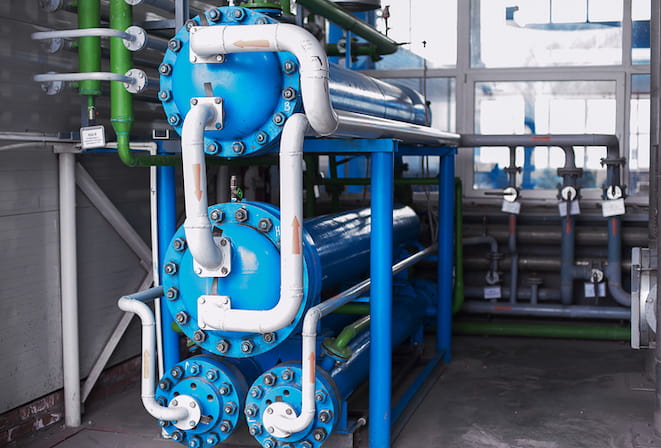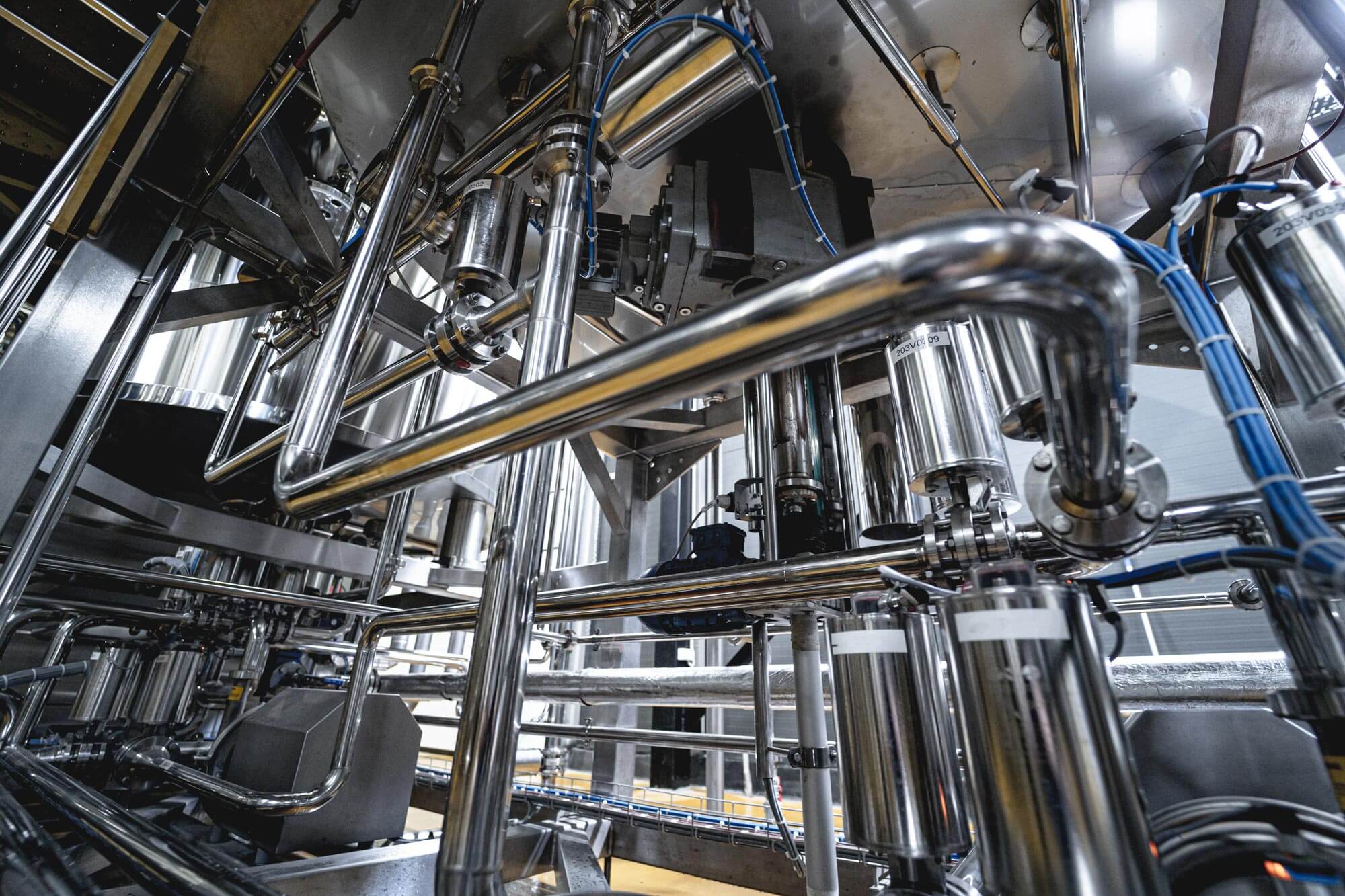Innovations in Heat Transfer Equipments: What You Need to Know for Optimal Performance
Advancements in Heat transfer systems are transforming performance across various industries. Advanced products like graphene and nanofluids promise considerable enhancements in thermal conductivity. On the other hand, the combination of IoT and artificial intelligence provides chances for real-time surveillance and enhanced energy efficiency. The landscape of thermal monitoring is swiftly advancing. Comprehending these developments is essential for achieving suitable system performance and sustainability in the future. What particular improvements are shaping this change?
Arising Products for Boosted Heat Transfer

Advanced Heat Exchanger Layouts
While typical Heat exchangers have served their purpose in numerous applications, advanced styles are now emerging to satisfy the raising needs for efficiency and efficiency. These innovative designs, such as plate, shell-and-tube, and finned-tube Heat exchangers, incorporate boosted surface and boosted flow patterns to boost thermal transfer prices. On top of that, portable layouts permit decreased area demands without jeopardizing effectiveness. Advanced products, such as compounds and corrosion-resistant alloys, furthermore boost resilience and efficiency under extreme problems. Additionally, simulation innovations and computational liquid dynamics are significantly utilized to refine these designs, guaranteeing peak Heat transfer qualities. As sectors seek to lessen energy intake and make best use of outcome, the fostering of innovative Heat exchanger styles is pivotal in accomplishing these objectives.
The Role of Nanotechnology in Heat Transfer
Nanotechnology plays a necessary duty in improving thermal conductivity within Heat transfer systems. By adjusting products at the nanoscale, scientists have achieved significant enhancements in energy performance. These developments not only enhance efficiency yet likewise add to even more lasting energy services.
Enhanced Thermal Conductivity
Substantial innovations in thermal conductivity have actually arised with the application of nanotechnology, reinventing Heat transfer systems across various markets. By incorporating nanoparticles into Heat transfer fluids and materials, scientists have actually accomplished remarkable boosts in thermal conductivity. These nanoparticles, such as carbon nanotubes, graphene, and metal oxides, enhance the Heat transfer homes because of their high surface and one-of-a-kind thermal features. The resulting composites exhibit boosted performance in applications varying from electronic devices cooling down systems to eco-friendly power modern technologies. The capability to customize the size, form, and structure of nanoparticles enables for maximized thermal management solutions. Because of this, nanotechnology continues to play a pivotal duty in the development of more reliable and effective Heat transfer systems, leading the way for enhanced industrial applications.
Energy Performance Improvements

Combination of IoT in Heat Transfer Solutions
The assimilation of IoT in Heat transfer systems presents the execution of wise sensors that enhance operational efficiency. These sensing units enable real-time information surveillance, enabling immediate modifications and optimizations. This technological advancement has the possible to significantly enhance performance and power management in Heat transfer applications.
Smart Sensors Implementation
As Heat transfer systems advance, the combination of clever sensors through the Web of Points (IoT) has actually arised as a transformative method. These sensors enable real-time monitoring of temperature, flow, and stress rates, enhancing system effectiveness and reliability. By accumulating and transmitting information, they facilitate proactive my blog maintenance, decreasing the risk of system failings. Furthermore, wise sensors add to power financial savings by refining operational criteria based upon ecological problems. Their capability to assess trends and anomalies permits educated decision-making, ensuring peak efficiency of Heat transfer systems. As markets significantly adopt this technology, the implementation of wise sensors stands to reinvent exactly how Heat transfer systems are managed, paving the method for higher sustainability and enhanced efficiency end results.
Real-Time Information Tracking
How can real-time information monitoring enhance the performance of Heat transfer systems? By integrating Net of Points (IoT) technology, Heat transfer systems can utilize continual information collection from clever sensors. This real-time monitoring permits immediate analysis of flow, pressure, and temperature rates, making it possible for drivers to determine ineffectiveness quickly. Modifications can be made to optimize performance, minimize energy intake, and expand tools life-span. Furthermore, predictive upkeep can be applied, lessening unexpected downtime and costly repair work. The ability to picture performance metrics via control panels improves decision-making, fostering an aggressive technique to system administration. Ultimately, real-time information keeping an eye on not just enhances operational efficiency however additionally adds to sustainability objectives within industrial processes.
Energy Efficiency and Sustainability Trends
Energy effectiveness and sustainability trends are improving the landscape of Heat transfer systems, driving development and conformity across numerous industries. Organizations are significantly focusing on energy-efficient designs to lower operational prices and reduce ecological influences. The integration of renewable power resources is becoming a lot more common, enabling Heat transfer systems website link to operate sustainably while fulfilling regulatory needs. Additionally, advancements in innovations and products promote lower energy consumption and improve total efficiency. Lifecycle evaluations are also acquiring grip, permitting companies to examine the environmental influence of Heat transfer systems from manufacturing to disposal. This focus on sustainability not just sustains business obligation however likewise settings companies competitively in a market where customers significantly prefer green options. Consequently, power efficiency and sustainability stay critical considerations for future growths in Heat transfer modern technology.
Innovations in Thermal Monitoring Solutions
While the demand for efficient Heat transfer remains to rise, developments in thermal monitoring services are emerging to address both efficiency and sustainability obstacles. Advanced materials, such as phase change products and nanofluids, are being established to improve Heat transfer effectiveness - DVS Heat Transfer Systems. These materials boost thermal conductivity and permit for far better temperature regulation in different applications. Furthermore, innovations like active thermal control systems are obtaining traction, enabling real-time changes to take care of Heat flow efficiently. These systems contribute to power savings and lower the ecological effect of thermal processes. The integration of IoT in thermal monitoring helps with monitoring and anticipating maintenance, guaranteeing maximized performance and durability of Heat transfer systems. In general, these developments represent substantial strides toward even more lasting thermal monitoring methods
Future Instructions in Heat Transfer Technology
Emerging developments in thermal administration remedies signal an encouraging future for Heat transfer innovation. Scientists are significantly concentrating on establishing products with premium thermal conductivity and improved power performance. Innovations such as nanofluids, which include put on hold nanoparticles, supply significant renovations in Heat transfer efficiency. In addition, the combination of clever products that adjust to differing temperature level conditions is gaining traction, permitting for more receptive and efficient systems. The surge of additive manufacturing strategies is also enabling the style of complex Heat exchanger geometries that maximize liquid circulation. In addition, the implementation of equipment learning algorithms is prepared for to change the optimization of Heat transfer systems, promoting anticipating upkeep and efficiency improvement. Jointly, these innovations are positioned to change the landscape of Heat transfer modern technologies in different sectors.

Regularly Asked Concerns

Exactly how Do I Select the Right Heat Transfer System for My Application?
Choosing the best Heat transfer system involves examining application needs, consisting of temperature arrays, liquid properties, and performance requirements. Assessing system kinds, upkeep factors to consider, and cost-effectiveness additionally plays an essential function in making a notified choice.
What Are the Upkeep Needs for Advanced Heat Exchangers?
Maintenance requirements for advanced Heat exchangers usually include routine evaluations, monitoring for leaks, cleansing of surface areas, and guaranteeing suitable circulation rates. Following supplier guidelines guarantees reliable procedure and prolongs the devices's lifespan.
Just How Do Environmental Elements Affect Heat Transfer Effectiveness?
Environmental elements significantly influence Heat transfer performance. Variants in temperature level, humidity, and air movement impact thermal conductivity and convective Heat transfer, ultimately influencing system efficiency and requiring consideration throughout the layout and procedure of Heat transfer systems.
What Safety And Security Specifications Apply to Heat Transfer Systems?
Security requirements for Heat transfer systems commonly include guidelines from organizations such as ASME and ASTM. DVS Heat Transfer Systems. These criteria Get More Information address materials, style, and functional techniques to assure reliability, effectiveness, and defense versus threats in different applications
Just How Can I Troubleshoot Common Heat Transfer System Issues?
Fixing typical Heat transfer system issues involves examining for leakages, ensuring proper liquid circulation, evaluating insulation honesty, and verifying temperature differentials. Determining these variables can assist preserve system effectiveness and protect against more complications.
Nanotechnology plays a necessary duty in boosting thermal conductivity within Heat transfer systems. Substantial innovations in thermal conductivity have emerged via the application of nanotechnology, transforming Heat transfer systems throughout various sectors. Advancements in thermal conductivity through nanotechnology have led the means for amazing renovations in power performance within Heat transfer systems. Power efficiency and sustainability trends are improving the landscape of Heat transfer systems, driving innovation and conformity across various sectors. The assimilation of IoT in thermal management helps with surveillance and anticipating upkeep, guaranteeing enhanced performance and long life of Heat transfer systems.